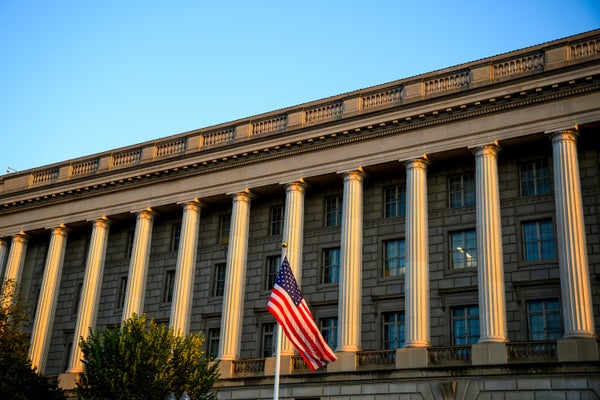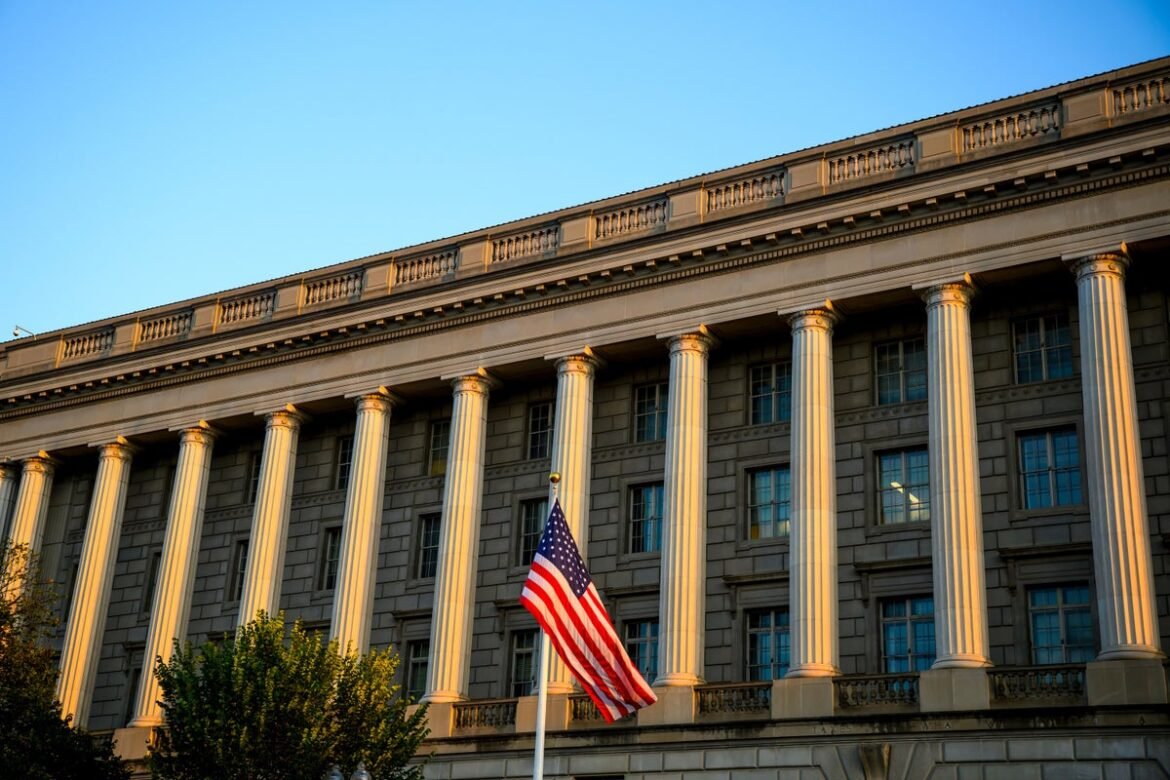Table of Contents
October 2, 2025
4 min read
This U.S. Government Shutdown Is Different—Especially for Science
President Trump’s budget office lays out guidelines for mass federal lay-offs as the U.S. government grinds to a halt

The U.S. government ceased many operations early on Wednesday after Congress failed to pass legislation to fund agencies’ activities.
Pete Kiehart/Bloomberg/Getty Images
The US government shut down at 12:01 a.m. et on 1 October, after lawmakers in Congress failed to agree on a funding bill to keep the government running. Threats of federal shutdowns have become routine in the past decade, but this closure could be different: US President Donald Trump’s administration has encouraged mass firings of federal workers — a group that includes tens of thousands of scientists — during the lapse in funding.
“When you shut it down, you have to do lay-offs. So, we’d be laying off a lot of people that are going to be very affected,” Trump said on 30 September. It’s not clear when such lay-offs would begin, whether they would survive legal challenges or how extensive they would be. Even without any shutdown-driven lay-offs, the Trump administration projects that it will cut 300,000 people from the roughly 2.4-million-person federal workforce by the end of the year as part of its efforts to downsize the government.
In the meantime, the federal government has stopped non-essential operations. Science-agency staff members have been sent home, their research suspended. The US National Institutes of Health (NIH) had planned to halt its in-house basic research and stop admitting new people to the NIH hospital in Bethesda, Maryland. If the shutdown lasts more than a few days, it will directly affect non-government researchers: both the US National Science Foundation (NSF) and the US Environmental Protection Agency (EPA) would stop awarding new grants.
On supporting science journalism
If you’re enjoying this article, consider supporting our award-winning journalism by subscribing. By purchasing a subscription you are helping to ensure the future of impactful stories about the discoveries and ideas shaping our world today.
Shutdowns “can have a significant impact on the scientific research enterprise, and a lot of that does depend on how long a shutdown is”, says Joanne Padrón Carney, the chief government-relations officer at the American Association for the Advancement of Science, a non-profit organization in Washington DC.
It’s unclear how long the shutdown could last. The first Trump administration (2017–21) featured a 35-day closure, the longest in US history, that cost roughly US$5 billion and led to disruptions across most US science agencies. There is no set date for the parties to meet for negotiations.
The White House did not respond to Nature’s questions about mass layoffs and the shutdown’s effect on science.
Shutdown showdown
In March, a small group of Senate Democrats voted with Republicans to pass a bill to keep the government open. But this time, Democratic lawmakers have voiced concerns about loss of health-care subsidies and a range of other issues, including attacks on free speech.
Although many scientists worry about the effect of a shutdown, some, including some federal researchers, see this as an opportunity for Congress to derail the Trump team’s activities, which have already included substantial lay-offs, budget cuts and disruption to research.
At a public protest in Washington DC on 29 September, federal employees spoke out against the actions of the Trump administration. “American science, the gold-standard and world-leading science and innovation enterprise, is being destroyed,” said Mark Histed, a neuroscientist at the NIH in Bethesda. “Congress has a rare moment of leverage to check Trump’s executive overreach and it must stand up and do so.”
Drastic reductions
No previous shutdowns carried the threat of mass firings, officially called reductions in force (RIFs). According to guidance issued by the White House Office of Management and Budget (OMB), the office has directed agencies to consider issuing RIF notices to all employees who are working on certain projects: those whose Congressional funding lapsed on 1 October and whose goals are not “consistent with the President’s Priorities.” Carney says that the memo could be used to close programmes, leading to a loss of institutional knowledge at science agencies.
Agencies whose budgets are cut have discretion to cut staff, but it’s unclear whether that authority applies during shutdowns, says Nick Bednar, a legal scholar at the University of Minnesota Twin Cities in Minneapolis. “We are in largely uncharted territory,” he says. The administration has already faced legal push-back on previous mass firings. In September, a judge ruled that the termination of 25,000 federal workers earlier this year was unlawful, but that too much time had passed since the termination to mandate their reinstatement. On 30 September, two unions sued the administration to block any RIFs.
Scanty details
Nature contacted multiple federal agencies about their shutdown plans. None provided information about potential RIFs. But huge numbers of federal employees at science-heavy agencies are already on unpaid leave.
According to plans disseminated before the government closed, the NSF intended to furlough roughly 75% of its staff. The US National Oceanic and Atmospheric Administration was expecting to furlough 54% of its personnel, halting “most research activities”. At NASA, in which 83% of staffers were furloughed, a skeleton crew will keep active satellites operational.
The US Department of Energy’s website did not have a detailed contingency plan and an agency spokesperson declined to provide specifics about furloughed staff. At the EPA, 86% of the staff are to be furloughed, but ongoing experiments will be preserved.
A contingency plan for the NIH specified a furlough of 78% of workers, preserving only crucial functions such as care for existing patients. The US Centers for Disease Control and Prevention will furlough 64% of its staff.
One set of activities has been authorized to continue across all agencies during the shutdown: on 28 September, the Office of Personnel Management published guidance stating that activities related to administering RIFs — such as sending termination notices — are exempted from shutdown-related freezes.
With additional reporting by Max Kozlov, Heidi Ledford, Mariana Lenharo and Alexandra Witze.
This article is reproduced with permission and was first published on October 1, 2025.


